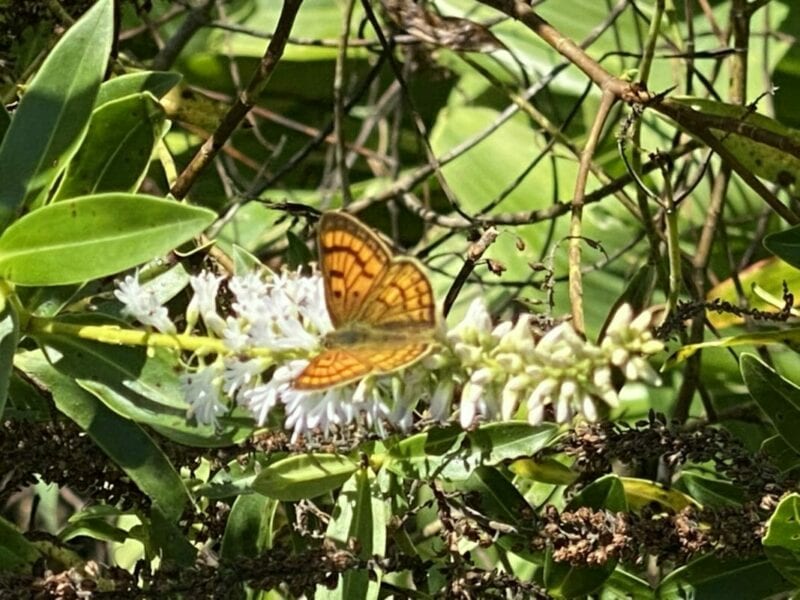Splendour in the shrub

Our copper butterflies are unique to the world – and relatively easy to attract to your garden by growing Muehlenbeckia varieties to host them. Words Jacqui Knight
I was devastated the other day when I took my dog for a walk along a coastal walkway here in Auckland. To one side of this winding path, a host of Muehlenbeckia had been planted. At some point the maintenance crew had cut it back and left pieces to die along the path.
Why was I upset at seeing how the plant had been cut back? Because any caterpillars that were on the
trimmings would have died. If the contractor had left the cuttings on top of the shrubs he hadn’t pruned, the caterpillars would have survived and gradually moved off and onto the living plant, eventually filling the area with more copper butterflies to be seen on summer’s days.
Muehlenbeckia is a multi-purpose native plant that is easy to grow. You can have it climbing up frameworks or banks, or form it into mounds, balls or spirals, which I am sure you will have seen on a visit to a botanical garden. It likes to creep and crawl its way in every direction it can. For that reason, it’s an excellent ground cover with its sprawling habit. One to avoid is M. australis as it can quite quickly take over trees and buildings, although it’s not recognised officially as a ‘pest’. Its common name, large-leaved muehlenbeckia, reflects that the leaves can be up to 2.5cm long. The other varieties have much smaller, more delicate leaves.
THE RIGHT SHRUB
If your muehlenbeckia is growing in a sunny space it should be relatively easy to introduce copper butterflies at some point. Copper butterflies are found all around the world, but New Zealand’s are unique.
M. complexa – known by a variety of names (scrub pōhuehue, small-leaved pōhuehue, wāekahu, wire
vine) – can also grow (like M. australis) in a tangled mass, providing great shelter for birds.
M. astonii (shrubby tororaro) has branches that zig, then zag. The leaves are bright lime and heart-shaped. It is one of only 11 native plants that is deciduous. In the winter you might think it has died, but it will spring back to life come the new season...
Read the full story in our August issue – on shelves now.
Subscribe here to get Kiwi Gardener delivered directly to your door each month.
